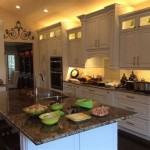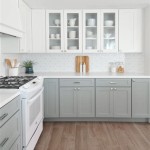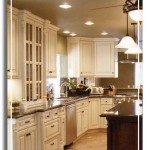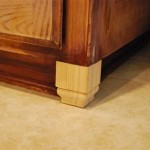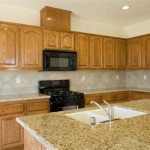Can You Paint Kitchen Cupboards Without Primer?
Painting kitchen cupboards can dramatically transform the aesthetic of a kitchen, offering a cost-effective alternative to replacing them entirely. A common question that arises during the planning phase is whether primer is a necessary step. The answer to this question is complex and depends on various factors, including the cupboard material, the existing finish, and the type of paint being used. Skipping primer can save time and money upfront, but it may lead to long-term issues such as poor adhesion, inconsistent finish, and decreased durability. This article will explore the conditions under which painting kitchen cupboards without primer might be feasible, as well as the potential risks involved and the best practices for achieving a professional and lasting result.
The primary function of a primer is to prepare the surface for paint. It seals porous materials, creating a uniform surface that allows the paint to adhere properly. Primer also blocks stains and tannins from bleeding through the paint, and it can improve the paint's coverage, often requiring fewer coats of paint to achieve the desired color and opacity. Understanding these functions is crucial when determining whether skipping primer is a viable option.
Adhesion Considerations
Adhesion is paramount for a successful paint job. Paint needs to bond securely to the surface of the cupboard to prevent chipping, peeling, and blistering. Without primer, the paint's ability to adhere properly depends heavily on the existing surface. If the cupboards are made of a non-porous material like laminate or melamine, paint will struggle to adhere directly. These surfaces are inherently smooth and lack the microscopic texture needed for paint to grip onto. In such cases, primer is essential to create a bondable surface.
Conversely, if the cupboards are made of wood, the need for primer becomes more nuanced. Raw wood is porous and will absorb paint unevenly, leading to an inconsistent finish. Primer seals the wood, preventing excessive absorption and ensuring uniform color application. However, if the wood cupboards have a pre-existing coat of paint in good condition and the new paint is compatible, it might be possible to paint directly over the existing finish after thorough cleaning and sanding.
Sanding plays a crucial role in promoting adhesion, even if a primer is used. Sanding creates a slightly rough surface that allows the paint to grip more effectively. When considering painting without primer, sanding becomes even more critical. The existing finish must be thoroughly scuffed to provide a suitable surface for the new paint to adhere to. The grade of sandpaper used should be appropriate for the existing finish; typically, a medium-grit sandpaper (around 120-180 grit) is sufficient for creating enough texture without damaging the underlying surface.
The choice of paint also influences adhesion. Some paints are specifically formulated to adhere to a variety of surfaces without primer. These paints often contain bonding agents that enhance their adhesive properties. However, even with these specialized paints, it's crucial to carefully assess the existing surface and prepare it accordingly to maximize adhesion.
Surface Preparation: Cleaning and Degreasing
Surface preparation is just as vital as the choice of paint and primer. Before any painting begins, the cupboards must be thoroughly cleaned and degreased. Kitchen cupboards are prone to accumulating grease, grime, and food splatters, all of which can interfere with paint adhesion. A degreasing cleaner specifically designed for kitchen surfaces should be used to remove any contaminants.
The cleaning process should involve washing the cupboards with the degreasing cleaner, rinsing them with clean water, and allowing them to dry completely. Any stubborn grease or grime may require additional scrubbing or the use of a stronger cleaning solution. After cleaning, a tack cloth can be used to remove any lingering dust or debris.
Failure to properly clean and degrease the cupboards can lead to paint peeling or bubbling. Even if a primer is used, contaminants on the surface can compromise its ability to bond effectively. Therefore, meticulous surface preparation is essential for achieving a durable and aesthetically pleasing finish, regardless of whether primer is used.
Paint Type and Compatibility
The type of paint used on kitchen cupboards significantly impacts the final result and durability. Different types of paint have varying properties regarding adhesion, coverage, and resistance to wear and tear. Acrylic latex paints are a popular choice for kitchen cupboards due to their durability, ease of application, and low odor. They also offer good color retention and are relatively easy to clean.
However, not all acrylic latex paints are created equal. Some are formulated with bonding agents that enhance their ability to adhere to various surfaces without primer. These paints are often marketed as "paint and primer in one" or "self-priming" paints. While these paints can be convenient, it's essential to carefully read the manufacturer's instructions and assess the existing surface to determine if they are suitable for the specific project.
Oil-based paints are another option for kitchen cupboards. They offer excellent durability and a smooth, hard finish. However, they are more difficult to work with than acrylic latex paints. Oil-based paints require mineral spirits for cleanup, have a strong odor, and take longer to dry. They also tend to yellow over time, especially in areas exposed to sunlight. If oil-based paint is already present on the cupboards, it's generally recommended to use an oil-based primer before applying a new coat of oil-based paint to ensure proper adhesion and prevent compatibility issues.
When choosing a paint, it's crucial to consider its compatibility with the existing finish. Applying an incompatible paint can lead to adhesion problems, such as cracking, peeling, or alligatoring. If unsure about the compatibility of a new paint with the existing finish, it's best to test a small, inconspicuous area first. This will allow you to assess the adhesion and appearance of the paint before applying it to the entire surface.
In summary, while painting kitchen cupboards without primer can potentially be done successfully, it requires careful consideration of the cupboard material, the existing finish, thorough surface preparation, and the selection of a suitable paint. Ignoring these factors can compromise the durability and aesthetic appeal of the finished product.

Painting Kitchen Cabinets Without Primer

Painting Kitchen Cabinets Without Primer

Can You Paint Kitchen Cabinets Without Sanding

How To Paint Kitchen Cabinets Without Sanding Or Priming

How To Paint Cabinets Without Removing Doors House Mix

How To Paint Kitchen Cabinets Without Sanding Or Priming

How To Paint Kitchen Cabinets A Step By Guide Confessions Of Serial Do It Yourselfer

How To Paint Kitchen Cabinets Without Sanding Or Priming

How To Paint Kitchen Cabinets Without Sanding Or Priming

What You Need To Know Before Painting Cabinets The Palette Muse
Related Posts

